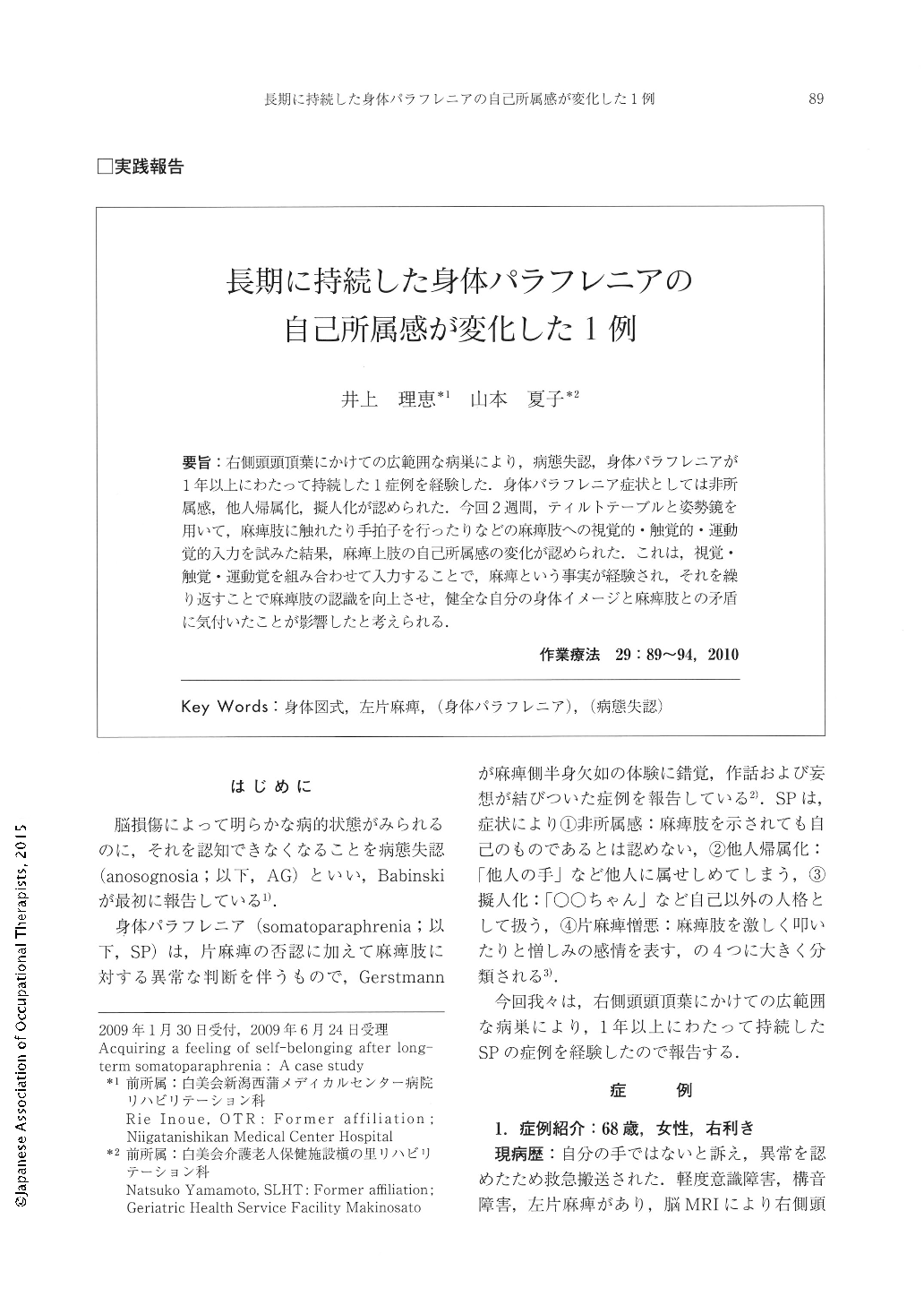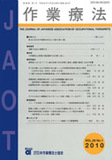Japanese
English
- 販売していません
- Abstract 文献概要
- 1ページ目 Look Inside
- 参考文献 Reference
- サイト内被引用 Cited by
要旨:右側頭頭頂葉にかけての広範囲な病巣により,病態失認,身体パラフレニアが1年以上にわたって持続した1症例を経験した.身体パラフレニア症状としては非所属感,他人帰属化,擬人化が認められた.今回2週間,ティルトテーブルと姿勢鏡を用いて,麻痺肢に触れたり手拍子を行ったりなどの麻痺肢への視覚的・触覚的・運動覚的入力を試みた結果,麻痺上肢の自己所属感の変化が認められた.これは,視覚・触覚・運動覚を組み合わせて入力することで,麻痺という事実が経験され,それを繰り返すことで麻痺肢の認識を向上させ,健全な自分の身体イメージと麻痺肢との矛盾に気付いたことが影響したと考えられる.
We investigated a case in which a large lesion on the right temporal-parietal lobe contributed to anosognosia and somatoparaphrenia lasting for more than one year. Symptoms included non-belonging, autoheterosyncisis, and personification. For two weeks a tilted table and mirror were used to facilitate sight, touch (touching the limb) and kinesthetic (beating time with hands) input to the paralyzed limb. As a result, there was a positive change in the feeling of self-belonging of the paralyzed limb.
By repeating a combination of the three inputs, there was an improvement of the recognition of the paralyzed limb. This input helped the patient realize the contradiction between body image and the paralyzed limb.

Copyright © 2010, Japanese Association of Occupational Therapists. All rights reserved.


